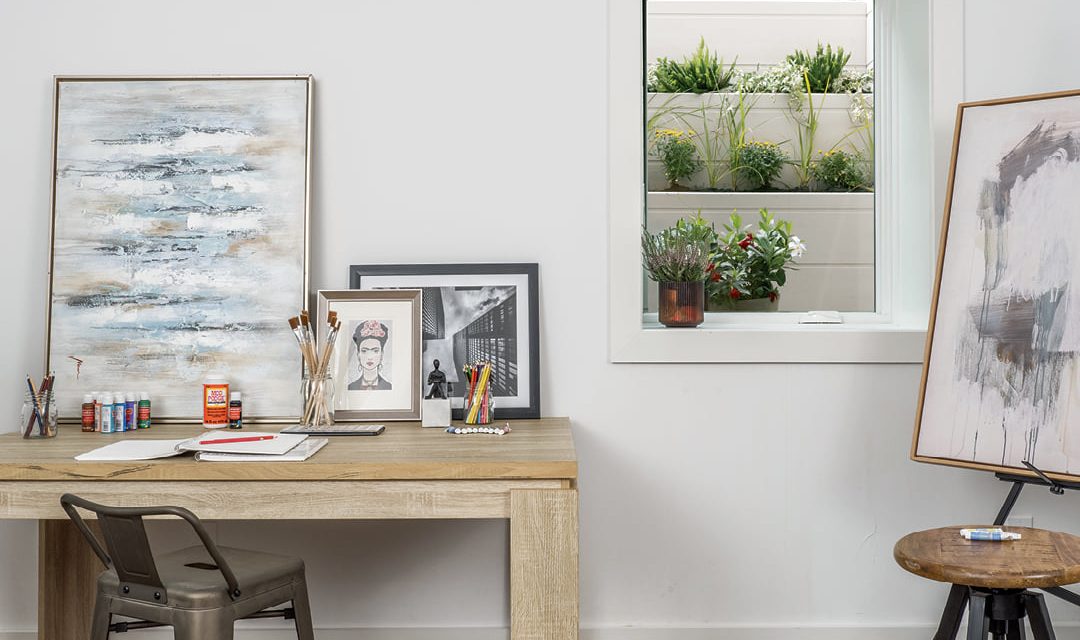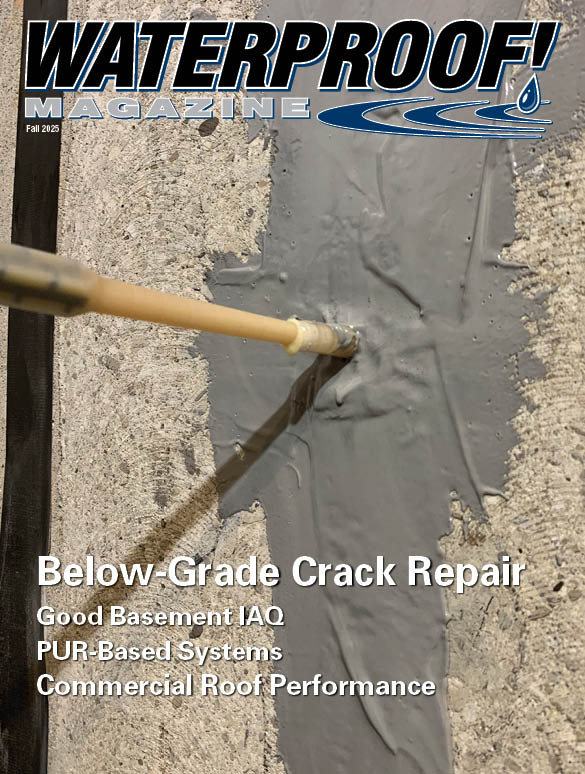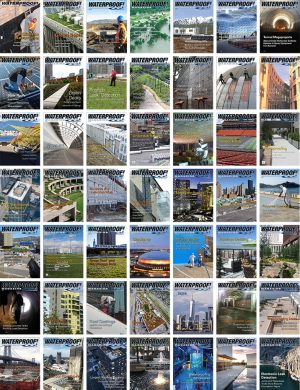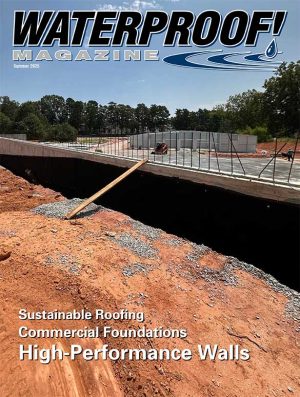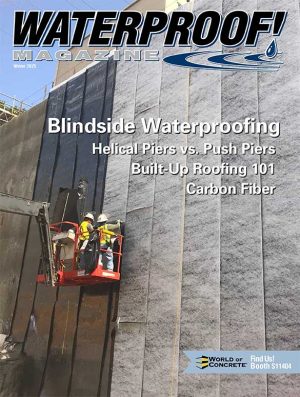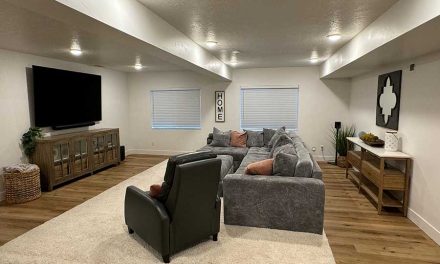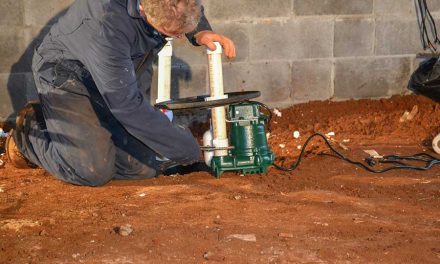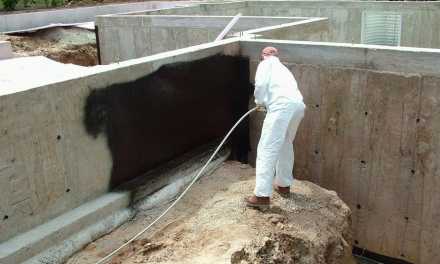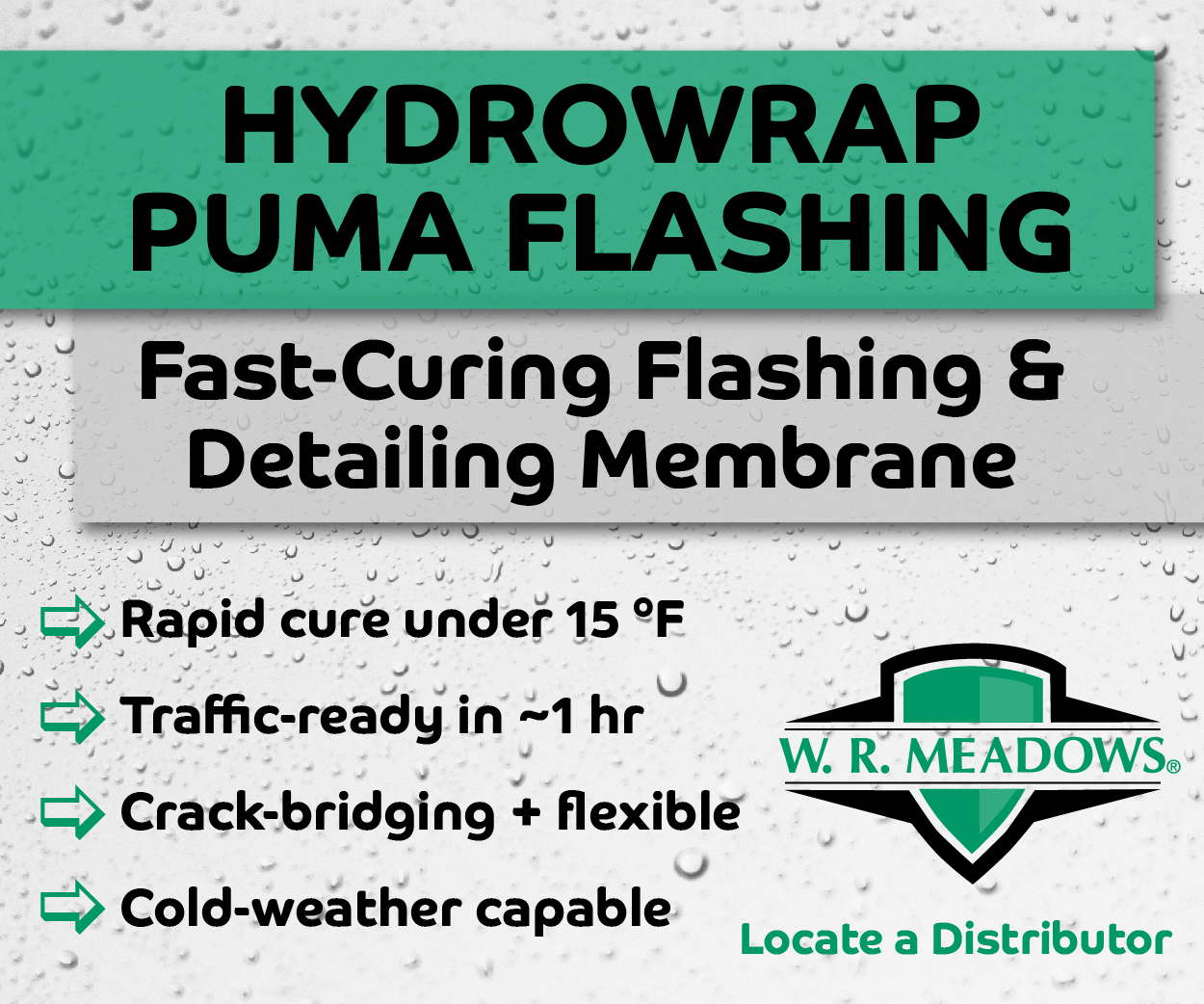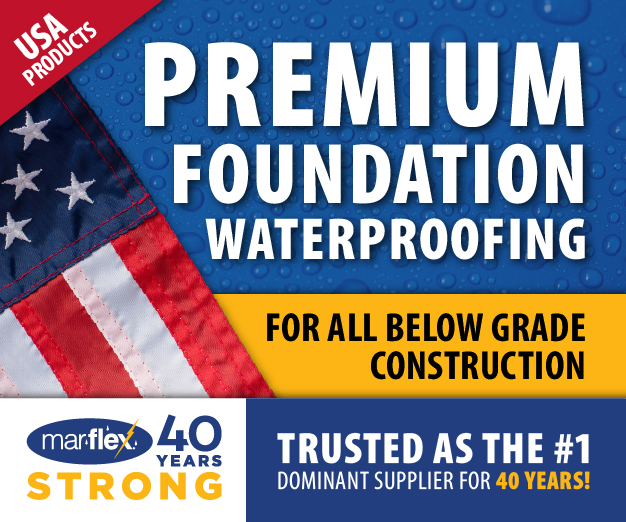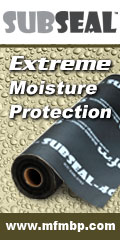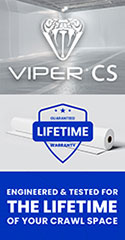By Vanessa Salvia
Photo courtesy of BILCO
As homeowners increasingly transform their basements into livable spaces — home theaters, offices, workout rooms, and family gathering areas — the importance of maintaining healthy indoor air quality in these below-grade environments has never been more important.
Basement environments are naturally cooler, which creates potential moisture issues. This environment requires specialized approaches to ensuring clean air in the rest of the home.
Perhaps the most compelling reason to prioritize basement air quality is its impact on the entire home. With up to half of a home’s air originating from basement and crawl space areas, controlling humidity and filtering air at the source creates benefits throughout the living space.
“Even if you don’t spend a lot of time in your basement, controlling the humidity and filtering that air before it moves to the upper levels of the home is only going to improve your comfort and indoor air quality in the rest of the house,” explains Nikki Krueger, director of marketing and business development for Santa Fe Dehumidifiers in Madison, Wisconsin.
The connection runs even deeper than many homeowners realize. “The foundation of a healthy home lies in the basement,” explains Erika Lacroix, owner of EZ Breathe Home Ventilation Systems. “What’s going on in the basement is going to dictate the indoor air quality upstairs,” she said. “There’s very little natural leakage in modern homes anymore, so as heat rises, all that air comes up from the basement and the crawl space.”
Lacroix says that many homeowners still don’t understand that their entire below-grade area of the home functions as part of the building envelope and therefore needs to be treated as such.
A Personal Wake-Up Call
For Sean Worthington, owner of Worthington Waterproofing, serving southeastern Pennsylvania and northern Delaware, this connection became a personal one. Nine years ago, Worthington brought his newborn son home from the hospital at the same time that his older daughter developed cold symptoms. Five family members — including Worthington himself — came down with a fever and a runny nose during the middle of summer.
“Something’s not adding up here,” Worthington recalls thinking. Drawing on knowledge from Basement Health Association conferences about mold and indoor air quality, he decided to investigate his crawl space. “Sure enough, there was mold.”
With a mold remediation company unable to respond for a week due to a holiday weekend, and unwilling to leave his newborn in a contaminated environment, Worthington took matters into his own hands. He had an EZ Breathe ventilation system and a Santa Fe dehumidifier sitting unused in his shed. He had purchased them but had been skeptical about whether they actually worked or not, so he had never installed them.
“I installed them both, one on one side, one on the other,” he explains. “No joke, the next day after installing them, everyone in the house was symptom-free.” He became such a huge believer that up until a couple of years ago, he became a dealer for EZ Breathe.
Understanding the Stack Effect
This rapid improvement Worthi-ngton experienced wasn’t co-incidental but the result of addressing a fundamental building science principle called the stack effect — the natural tendency for warm air to rise, creating continuous upward airflow from the basement to the upper floors.
The mechanism behind basement air’s impact on your entire home is called the stack effect — the natural tendency for warm air to rise, creating a continuous upward flow from the basement to the upper floors and attic. “Sometimes in older homes, you see there’s no ventilation in the bathroom,” Lacroix said. “You take a shower, and there’s no way to evacuate that humidity. That’s what a basement is, unless you have some way to evacuate the air. It just becomes this sweaty, humid environment, and then all that humidity gets drawn up into the upper levels.”
The consequences can extend throughout the entire home structure. Lacroix explains that mold remediators who are called to check on attic problems will first check the basement, since damp basement air naturally migrates upward through the house and can create mold issues all the way up to the attic level.
But the stack effect creates another problem many homeowners don’t consider. “When air from the crawl space comes up, other air has to go into the crawl space to replace it, otherwise there’d be a vacuum down there,” explains Worthington. “And that air gets pulled through the foundation, through the walls, through the floor, through whatever.”
This replacement air carries moisture from the surrounding soil, which is typically wetter than areas farther from the foundation.
Humidity and Condensation
The most significant threat to basement air quality stems from moisture control issues. The problem often begins with well-intentioned cooling efforts that can backfire.
“The challenge with controlling humidity throughout the home with only the air conditioning system is that it only removes water when it is running,” says Krueger. “Often, people will feel uncomfortable during the shoulder seasons and overnight periods when temperatures are low but dew points are high. The solution is to crank down the thermostat, aka the comfort control center, thinking it is a temperature problem when ultimately it is a humidity issue. With the basement already being cooler, this can lead to condensation and potentially microbial growth.”
This scenario plays out frequently in finished basements. Since basements naturally maintain cooler temperatures due to their below-ground location, they typically don’t require as much cooling as upper floors. However, when homeowners lower the thermostat to combat heat on upper levels, the excess cool air delivered to the basement can create condensation problems on ductwork and surfaces.
Maintaining proper humidity levels is crucial for preventing these issues. “There’s a little bit of discussion about whether that’s 55% or 50%, but certainly below 60% is where you want to keep humidity levels, because mold can grow anywhere north of 50%,” explains Lacroix.
The goal, according to Lacroix, is to create an environment where mold cannot grow, and then you don’t have to worry about treating it.
Choosing the Right Dehumidification System
Selecting an appropriate dehumidifier for basement spaces requires careful consideration of both capacity and design. Size matters, but so does the equipment’s ability to function effectively in cooler environments.
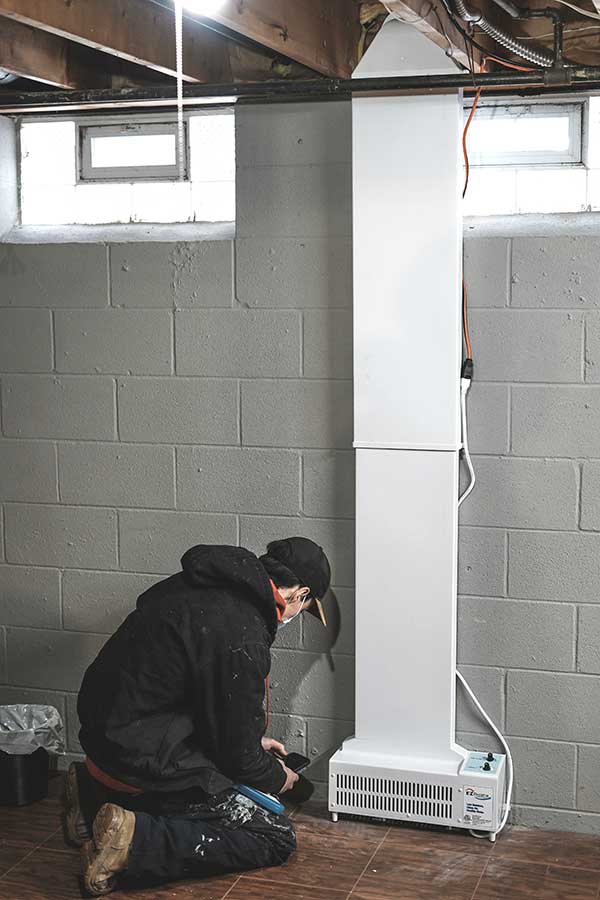
EZ Breathe units work to ventilate basement air so that the air that moves into the rest of the home is healthy. Photo courtesy of EZ Breathe
“A lot of times we go by square footage for a dehumidifier,” notes Krueger. Every company has its own recommendations for square footage, she says, but Santa Fe Dehumidifiers’ recommendations are “very conservative.” Plus, there are variables that change, such as with the number of people using the space — since occupants generate additional moisture — so if you have an influx of visitors or higher rates of usage at different times of year, that will increase demand.
“It’s better to have a little bit more dehumidification than you need,” she said.
Professional Grade vs. Big Box Store Units
Not all dehumidifiers are created equal, particularly when it comes to basement applications. Consumer-grade portable units from big box retailers often fall short in basement environments.
Dehumidifiers from big box stores are not really engineered for the cooler spaces that dehumidifiers typically serve, explains Krueger. “As soon as they get into lower temperatures, their capacity to remove water can go way down,” she said.
Professional-grade residential dehumidifiers are specifically designed to maintain consistent moisture removal even at the lower temperatures common in basements and crawl spaces.
Ventilation and Humidity Together
While dehumidification is important, proper ventilation offers another approach to basement air quality management. “We’re big fans of ventilation, because we feel that it’s a lot simpler, no maintenance, less expensive, and just superior in terms of air exchange and contaminant removal,” explains Lacroix.
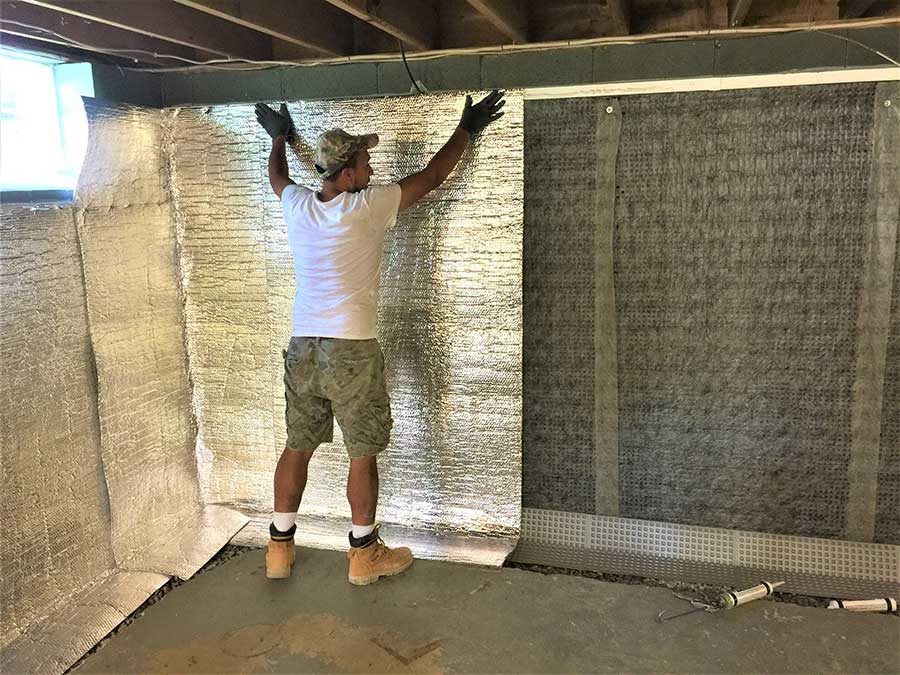
Sean Worthington says his Breathable Wall Encapsulation technique prevents what he calls the “shower curtain effect” of moisture getting trapped between the vapor barrier and the wall, which can lead to mold growth and structural deterioration. Photos courtesy of Sean Worthington
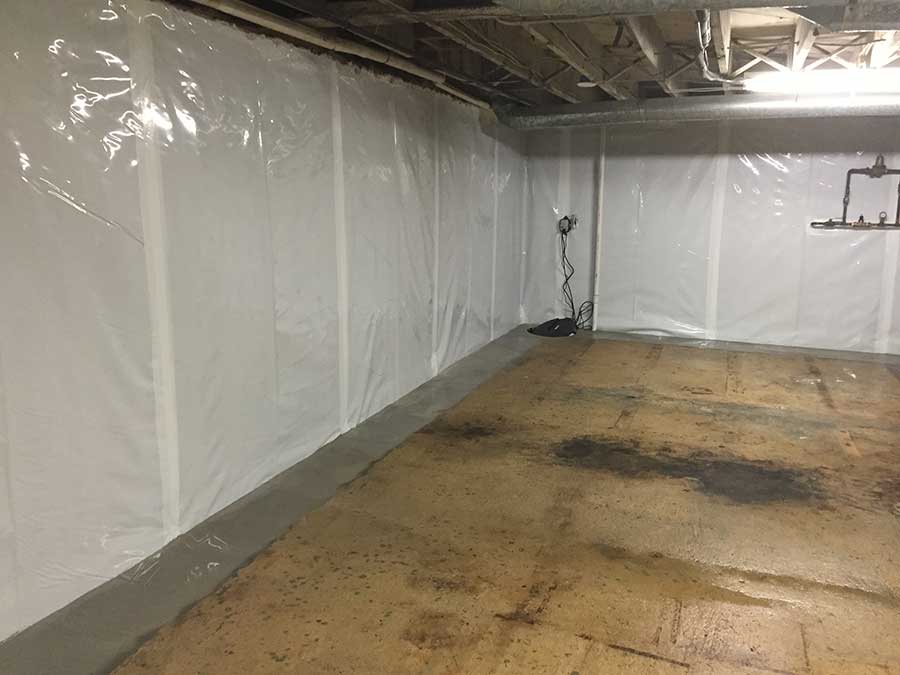
The key difference lies in addressing the root cause rather than just managing symptoms. “Many basements don’t have any sort of supply or return,” notes Lacroix. “So they become this stagnant environment where you have to mechanically provide some sort of air exchange, whether it be putting a supply from the HVAC system that delivers air to the basement, or creating some sort of ventilation with an exhaust situation where you’re evacuating the air out of the basement.”
While both ventilation and dehumidification are important, Worthington believes they work best together. “In an ideal world, you put a dehumidifier in one corner of the basement or crawl space, and then you put the EZ Breathe in the opposite corner,” he says. “The dehumidifier is pushing out all that dry air, and then the EZ Breathe is creating a draw, pulling that air across the entire space.”
Air Filtration
Effective basement air quality management extends beyond humidity control to include proper air filtration. This is where MERV (Minimum Efficiency Reporting Value) ratings become important.
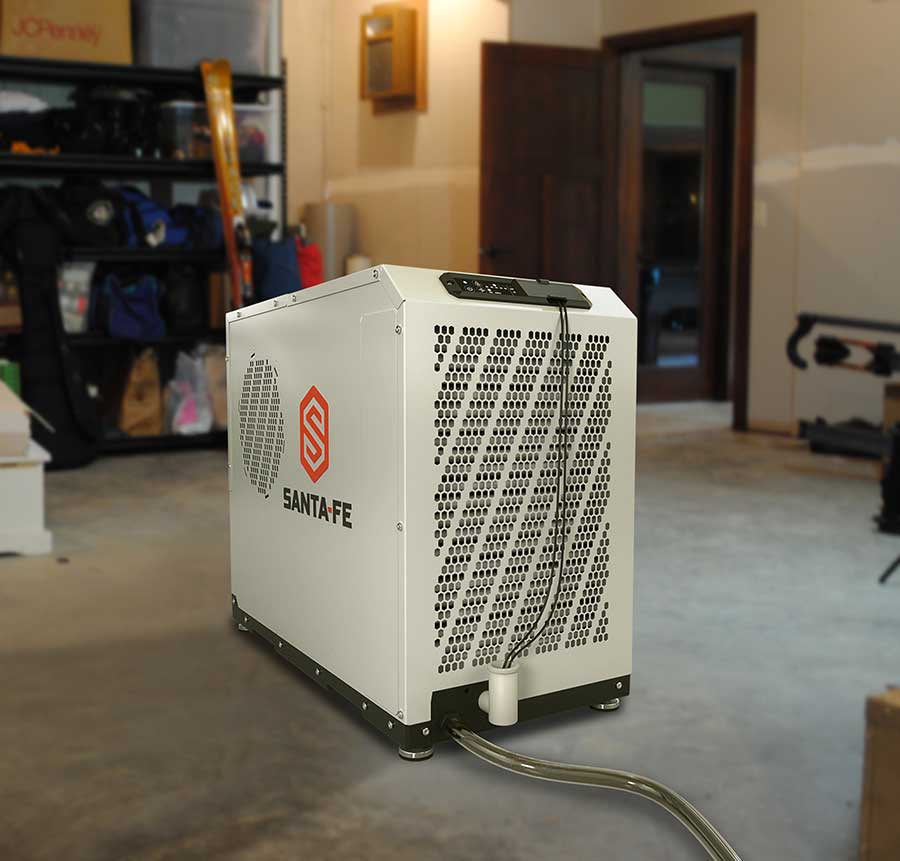
Santa-Fe Dehumidifiers can help when temperatures are low but dew
points are high. Photo courtesy of Santa Fe Dehumidifiers
High-quality basement de-humidification systems should be capable of a high level of filtration. MERV 13 filters, which Santa Fe Dehumidifiers use, for instance, are designed to trap at least 85% of particles that are 1.0 micron in size, effectively removing the majority of airborne contaminants that could affect respiratory health.
“We have a MERV 13 filter on our dehumidifiers,” said Krueger. “We’re the only ones that offer that, because that level of filtration really will remove a majority of potentially what can affect you from a respiratory standpoint. MERV 13 filters do a really good job at removing the majority of the stuff that’s in our air, especially in a basement.”
Wildfire Smoke a Growing Concern
As wildfire smoke increasingly blankets large parts of the U.S. each summer, basement air quality becomes even more important.
While expensive portable air purifiers often dominate wildfire preparedness discussions, your existing HVAC system may already provide significant protection at a fraction of the cost. The key lies in proper filter selection and proactive maintenance.
According to the filtration experts at All Filters, the U.S. EPA recommends MERV 13 or higher filters for handling wildfire smoke particles (https://www.epa.gov/wildfire-smoke-course/preparing-fire-season). However, many older HVAC systems can only handle MERV 8-11 without causing detrimental airflow restrictions. The solution is upgrading to the highest MERV rating your specific system can accommodate.
Advanced Foundation Solutions
Worthington’s experience led him to develop what he calls Breathable Wall Encapsulation, a technique he believes addresses moisture infiltration more effectively than traditional methods.
“An average house is bringing in 22 gallons of water vapor every single day just because of the stack effect,” he explains. “If I’m not doing something to minimize what’s coming through the foundation, then I’m asking that EZ Breathe and that dehumidifier to work harder.”
His approach involves installing rain screen material — typically used behind stucco to create drainage gaps — against basement or crawl space walls before applying traditional vapor barrier sheeting.
“We put rain screen on the basement or crawl space wall, and then we put our white plastic sheeting over top of it, and we seal it with a termination bar at the top, and then we fold it down into our drain at the bottom,” explains Worthington.
This prevents what he calls the “shower curtain effect” — moisture getting trapped between the vapor barrier and the wall, which can lead to mold growth and structural deterioration over time.
Taking Action
Basements are no longer just storage areas where you visit occasionally throughout the year. Buildings are more enclosed now than they used to be. We also know more about indoor air quality and the “whole house” effect of air as it is drawn from lower levels of the home into upper areas.
Homes built to current standards include required ventilation for primary living spaces, but basements that are frequently used areas need additional fresh air circulation.
This is particularly important for basement spaces used as home offices, workout rooms, bedrooms, entertainment areas, or children’s play spaces.
“If you are spending a lot of time in that basement, you might have to look at some dedicated ventilation as well,” says Krueger.
The materials you choose for basement flooring can significantly impact air quality. While carpet provides a comfortable feeling, you can start getting condensation and potentially microbial growth below that carpet.
“I would minimize using carpet,” advises Krueger. “I wouldn’t recommend carpet being used, especially on top of cement floors in basements.”
No discussion of basement air quality is complete without addressing radon, a naturally occurring radioactive gas that can accumulate in below-grade spaces.
The EPA action level for radon is 4 picocuries per liter or higher, which is considered elevated and requires mitigation measures.
Modern basements often house expensive electronics, from home theater systems to HVAC equipment. Proper humidity control protects these investments while improving air quality.
“If you’re putting in a theater room, very common in basements, you’re going to want to control that moisture for your electronics as well,” notes Krueger. Excessive humidity can damage sensitive electronic components while also contributing to air quality problems.
The investment in basement air quality improvements pays dividends in comfort, health, and property protection while ensuring that your below-grade living spaces remain as pleasant and safe as the rest of your home.
Fall 2025 Back Issue
Price range: $4.95 through $5.95
PUR-Based Systems: A High-Performance Concrete Protection and Traffic Coating Solution
Breathing Easy With Good Indoor Air Quality, Starting with the Basement
Restoration vs. Replacement: Maximizing Commercial Roof Performance
Below-Grade Crack Repair Solutions
Four Decades of Proof: Why Silicone Coatings and Sealants Stand the Test of Time
Case Study: New York State Capitol Building
Description
Description
PUR-Based Systems: A High-Performance Concrete Protection and Traffic Coating Solution
By Tom Stuewe, Senior Product Manager, Siplast
In today’s fast-paced commercial construction landscape, polyurea and polyurethane-based deck coating systems have become indispensable for their exceptional combination of durability, flexibility, and performance.
Breathing Easy With Good Indoor Air Quality, Starting with the Basement
By Vanessa Salvia
Even if you don’t spend a lot of time in your basement, controlling the humidity and filtering that air before it moves to the upper levels of the home will improve your comfort and indoor air quality in the rest of the house.
Restoration vs. Replacement: Maximizing Commercial Roof Performance
By Vanessa Salvia
Commercial roofing presents challenges that set it apart from residential applications, such as being expansive surfaces that are almost flat. Proper maintenance programs can extend roof life well beyond design specifications and prevent the majority of warranty claims.
Below-Grade Crack Repair Solutions
By Vanessa Salvia
Modern techniques and materials are revolutionizing how contractors approach structural crack repair in basements, combining traditional injection methods with innovative carbon fiber reinforcement systems.
Four Decades of Proof: Why Silicone Coatings and Sealants Stand the Test of Time
By Errol Bull, Technical Services Manager at Momentive Performance Materials
How do you know if waterproofing solutions will stand the test of time? One study, started in 1983, seeks to answer that question.
Case Study: New York State Capitol Building
A centerpiece in the heart of Albany, the New York State Capitol Building’s central courtyard required updates to its roofing and cladding.
Additional Info
Additional information
| Weight | N/A |
|---|---|
| Magazine Format | Digital Download Magazine, Print Mailed Magazine |

